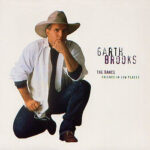Bachata, a captivating dance and music genre, originates from the beautiful Dominican Republic. Its infectious rhythm and passionate movements have propelled it to global fame, making it a favorite in dance communities worldwide. Whether you’re drawn to its social partner aspect, deeply rooted in Dominican culture, or wish to explore it solo, Bachata offers a rewarding dance journey for everyone. As you embark on learning Bachata, you’ll discover a rich tapestry of styles that have evolved internationally, sometimes blending with other dance forms like Salsa, incorporating exciting turn patterns and techniques. Even within the Dominican Republic, Bachata styles vary, influenced by personal expression, age, region, and diverse cultural factors. This guide will focus on foundational elements gleaned from extensive experience, research, and immersion in the Dominican Republic, providing you with authentic insights to begin your Bachata adventure.
Immerse Yourself in Bachata Music
To truly grasp the essence of Bachata and learn to dance it authentically, begin by tuning into Bachata music frequently. Make it a part of your daily soundtrack – in your car, while cooking, during workouts, and especially when you practice dancing. Exploring different Bachata artists and rhythms will deepen your connection to the dance. We’ll suggest a Bachata music playlist to get you started later.
Master the Basic Bachata Steps
Start your Bachata journey by learning the foundational step, often called the “basic step,” while staying in place. Focus initially on feeling the rhythm and relaxing into the movement, rather than striving for perfect technique. The basic step consists of three steps followed by a tap or touch, repeated on the opposite side. This “touch” on the fourth beat can be expressed in various ways, hence the different terms used. The step pattern is: step on 1, 2, 3, touch, step on 5, 6, 7, touch, and repeat. Some instructors count this in eights: 1, 2, 3, touch, 5, 6, 7, touch. In our videos, we’ll align the first step with the first beat of the music and the touch on the fourth beat. However, it’s important to know that in the Dominican Republic, dancers often start the basic step on any of the four beats, showcasing the dance’s inherent adaptability. A later video will delve into this concept more thoroughly.
Bachata music is in 4/4 time. You can count the rhythm in sets of four – 1, 2, 3, 4 – 1, 2, 3, 4. Alternatively, some teachers count in eights – 1, 2, 3, 4, 5, 6, 7, 8. Each count represents a full beat.

